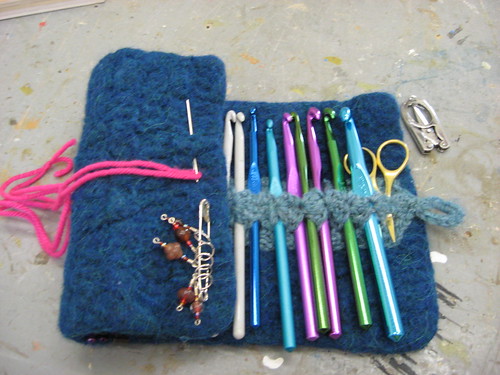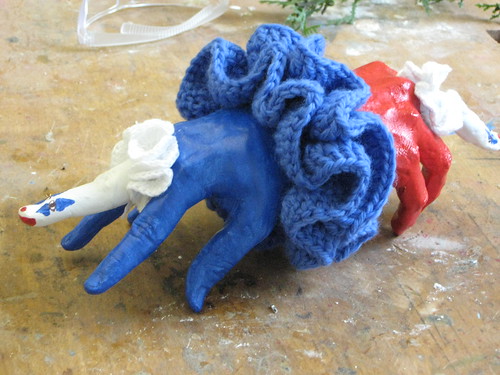Ravelry Link Here
Published in: Knit Picks Serenity Crochet Collection, KnitPicks
Craft: Crochet
Category: Sweater → Pullover
Published: June 2013
Yarns suggested: Knit Picks Galileo
Yarn weight: Sport / 5 ply (12 wpi)
Gauge: 20 stitches and 15 rows = 4 inches in alternating rows of sc and dc worked through the back loop
Needle size: US 19 – 15.0 mm
Hook size: 3.5 mm (E)
Yardage: 1090 – 2970 yards (997 – 2716 m)
Sizes available: 32 (34, 36, 38, 40, 42, 44, 46, 48, 50, 52, 54, 56, 58, 60, 62, 64)”
This pattern is available for download for $4.99.
Early mornings around the house, days out and about and evenings in the yard – Witchlace is a sweater that embodies all of these moments. It’s both simple and feminine, pretty yet casual; reclaiming an old technique, broomstick lace, in a more modern way. The front, sleeves and back are worked while alternating rows of DC or HDC with single crochet. A textured ribbed effect is produced by working the stitches through the back loops. All four pieces are worked flat, blocked and seamed, then the yoke is picked up from each of the pieces and worked. Finally, the broomstick lace is started in the round and alternates with rows of single crochet (worked through both loops) up to the neckline.
For more information, see: http://www.knitpicks.com/patterns/accessories-en/sweaters/witchlace-sweater.html
Got questions? Wondering if you should make this? This is the place to ask!














